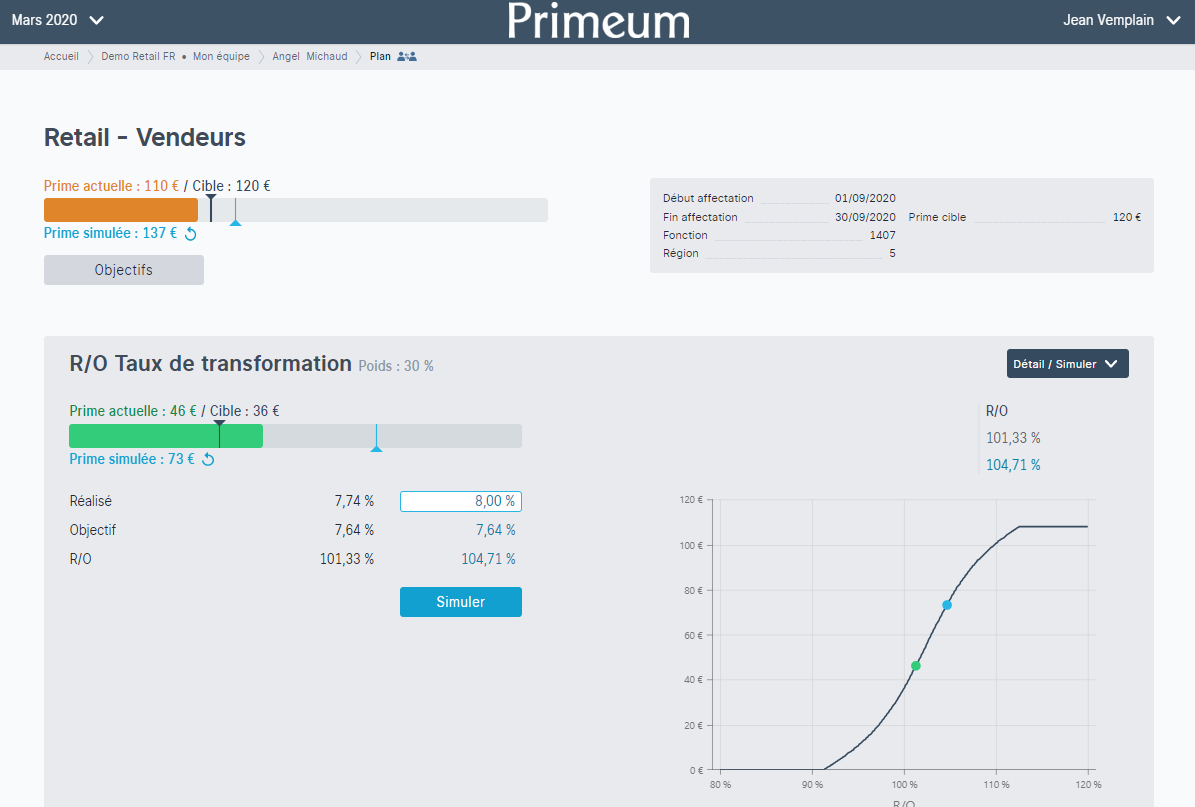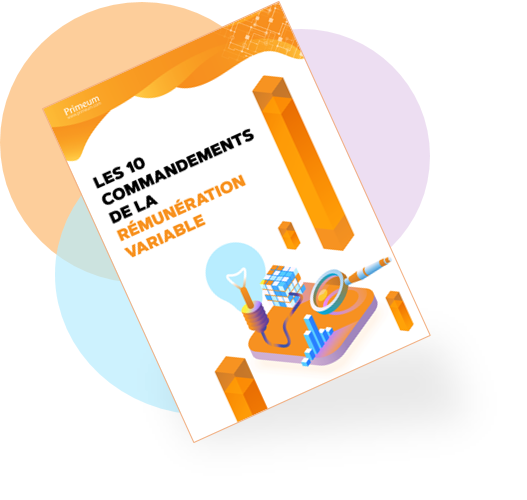To motivate your salespeople and improve business performance, you need to communicate and manage incentive compensation throughout the performance cycle!
However, 60% of sales managers believe their bonus schemes are inadequately managed.
Yet incentive compensation remains a tool for aligning beneficiaries’ action plans with a company's strategy throughout the performance cycle.
Don’t wait until the end of the cycle; your sales staff will pay you back. A salesperson who discovers their bonus on their pay slip will no longer have the required motivation to change their behaviour and achieve the requirements set by their company through their bonus plan.
There is no point in rushing; you have to manage the right way
 You can improve transparency in the compensation process through five basic steps:
You can improve transparency in the compensation process through five basic steps:
- Prepare effective communication at the beginning of the cycle: that way, everyone knows the exact rules for calculating their remuneration and their objectives
- Organise follow-up meetings, drawing on good examples and highlighting areas for improvement
- Make the intermediate follow-up calculations needed to get to grips with the bonus schemes
- Give your salespeople the opportunity to simulate their bonus according to their anticipated performance
- Communicate fairly and impartially at the end of the performance period.
Orchestrated communication at the beginning of the cycle
Often set up by sales management, the kick-off meeting at the beginning of the performance period provides a reminder of the company’s strategic priorities and national sales targets, and clarifies any changes in the rules for calculating incentive compensation.
Monthly follow-up meetings
A good practice to follow is to organise monthly business performance meetings.
They allow managers to check up on the morale of teams, to conduct an intermediate review of the achievement of targets, and to lower them if need be if the market and the environment are too unfavourable, so that you don’t demotivate your forces. They are also the chance to establish connections, interact and highlight good business practices.
Des calculs de primes intermédiaires
Some companies automate the calculation of bonuses to make them quickly available to employees, particularly when a calculation during the performance cycle is involved. This lets your sales staff know the bonus they have earned and they can anticipate possible under- and over-performance to better manage performance. It also improves the use of a company’s bonus scheme and helps staff understand the company’s requirements.
Note that an intermediate calculation is effective as long as it is fair and is shared in the middle of the performance period.
Stimulate the calculating spirit of your teams through simulation
Your sales staff will be more motivated if they can project their future earnings. In companies that do not have a simulator in place, it is common to find “home-made” incentive compensation calculation matrices made by the employees themselves to simulate their incentive compensation. These home-made matrices attempt to reproduce the bonus scheme, but often contain errors, which can lead to disappointment.
Why not take back control? Why not give your sales staff the possibility to simulate their compensation?
If they spend less time calculating their bonus, they will spend more time aiming to perform well. Salespeople who know and can check how much they can earn through a simulator will naturally be quicker to play the game and inclined to achieve their targets.
Communicate a fair result at the end of the cycle
At the end of the performance period, the issue of transparency becomes an issue of credibility. There is nothing worse than sharing an incorrect calculation with your employees.
There is also the issue of time. Giving out the results of the cycle two months after it has ended can lead to a loss of credibility.
A number of checks are still needed to avoid having to recalculate the results based on past results, which would discredit the process.
EQUIP YOURSELF WITH A MANAGEMENT TOOL TO STIMULATE BUSINESS PERFORMANCE
For each of the five stages mentioned above, the key is being able to give the right information to the right person as quickly as possible to improve transparency and therefore performance.
There are tools that enable the comprehensive management of incentive compensation, from the initial disclosure of the scheme and targets to the final communication at the end of the cycle. These digital tools include a simulator with bonus gauges showing the employee where they stand and the amount that can be earned by predicting performance.
This tool provides the right calculation at the end of the performance period and highlights the employee’s real performance.
Your staff can then simulate their future bonuses according to their predicted performance for the following periods.

At Primeum, we have mobilised our teams to develop a solution that meets your management needs, regardless of the structure of your business, the frequency of communication and the methods used for your schemes, from qualitative assessments to commission, target bonuses and best employee competitions etc.





